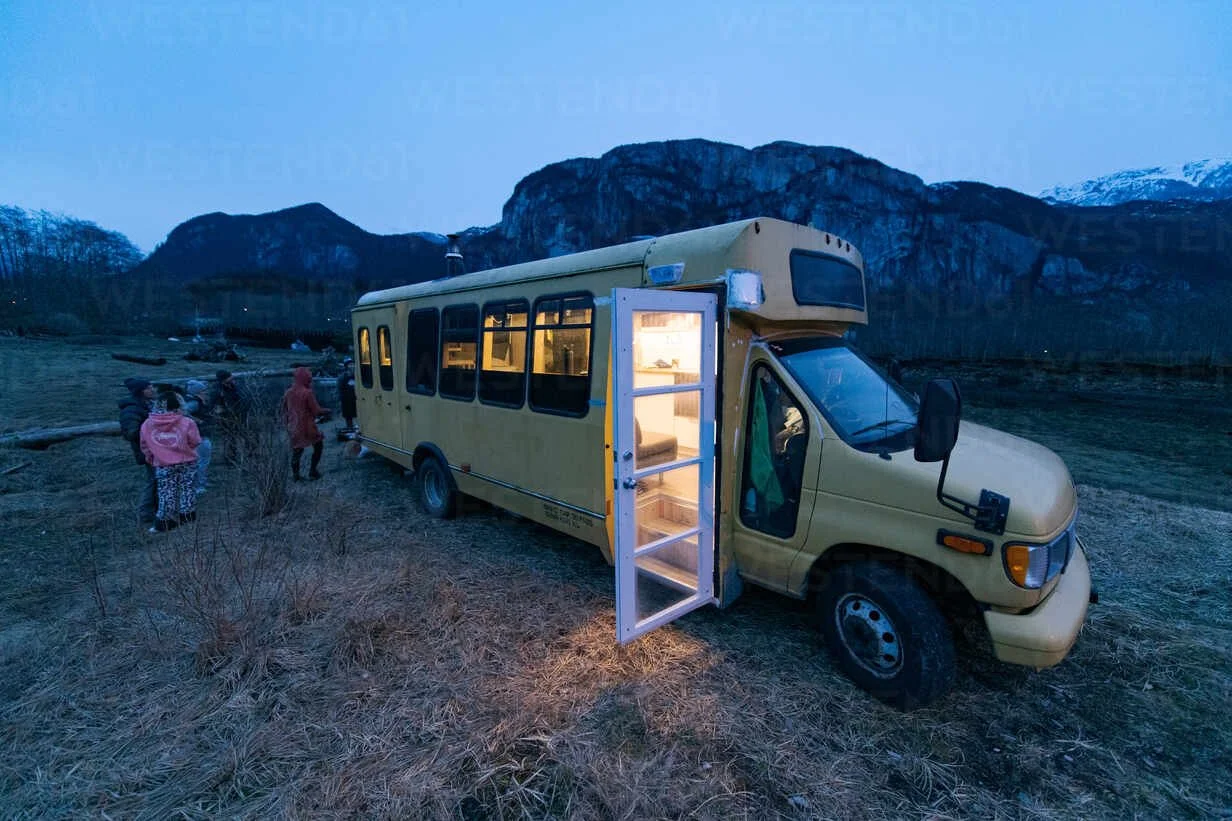5 Common Mistakes to Avoid When Converting a Shuttle Bus to an RV
Converting a shuttle bus into an RV is an exciting and rewarding project that truly allows you to create a customized living space on wheels. Whether you're planning a full-time mobile lifestyle or just looking for a unique way to travel, a shuttle bus conversion can be a great option. However, it's important to avoid common mistakes that can cause setbacks or even make the project unfeasible. In this post, we'll discuss five common mistakes to avoid (mistakes we see all the time!) when converting a shuttle bus to an RV, so you can make the most of your conversion project.
Mistake #1: Underestimating the Cost
One of the most common mistakes people make when converting a shuttle bus into an RV is underestimating the cost of the project. While it may seem like a cheaper alternative to purchasing a new RV, the cost of materials, tools, and labor can quickly add up. Unexpected issues often arise during the conversion process, such as hidden damage to your bus or complex electrical problems, which can further increase the cost. To avoid this mistake, it's important to research and plan the conversion thoroughly, taking into account all of the necessary materials and labor costs. Creating a budget and sticking to it can also help ensure that you don't overspend. (Want to see our budget as an example? Click here)
Mistake #2: Neglecting Safety and Legal Requirements
Another common mistake people make when converting a shuttle bus into an RV is neglecting safety and legal requirements. While it may be tempting to cut corners in order to save time or money, it's important to follow all applicable regulations and guidelines for your conversion. This includes ensuring that your RV meets size and weight restrictions for the road, installing safe electrical and plumbing systems, and using materials that meet safety standards. (While not every system will be legally required to meet certain requirements, we will always recommend that you use the safest option when it comes to materials, appliances, and systems.) Neglecting these requirements can not only put you and your passengers at risk, but in some situations can also result in fines or legal issues down the line (I.e. don’t put in seatbelts on your couch to carry extra passengers if you don’t understand the process needed to make sure they’re properly installed). To avoid this mistake, research and understand all applicable regulations and guidelines before beginning your conversion, and make sure to adhere to them throughout the process.
Mistake #3: Choosing the Wrong Shuttle Bus
Choosing the wrong shuttle bus for your conversion can lead to difficulties and setbacks throughout the process. For example, a shuttle bus that is too small may not provide enough living space, while a bus that is too large may be difficult to maneuver on the road. Additionally, certain bus models may not have features that are conducive to your RV conversion, such as low ceilings or no wheelchair access. To avoid this mistake, it's important to research and choose a shuttle bus that is well-suited to your needs and the type of conversion you have in mind. We break down the best way to pick a bus to fit your needs here.
Mistake #4: Not Having a Clear Plan
Not having a clear plan for your shuttle bus to RV conversion can lead to mistakes and setbacks throughout the process. Without a clear plan, you may end up making decisions on the fly or changing your mind about key features, which can result in wasted time and materials. To avoid this mistake, it's important to have a detailed plan in place before beginning your conversion. This plan should include a list of necessary materials and tools, a timeline for the conversion process, and a clear idea of the layout and design of your finished RV. Having a clear plan can help you stay on track and avoid making unnecessary changes along the way.
Mistake #5: Rushing the Conversion Process
Finally, rushing the conversion process can be a costly mistake when converting a shuttle bus into an RV. While it may be tempting to rush through certain steps in order to finish the conversion quickly, doing so can lead to mistakes and a sub-par final product. Additionally, rushing the conversion process can lead to burnout and exhaustion, which can (read as: will) impact the quality of your work. To avoid this mistake, it's important to take your time and work methodically through each step of the conversion process. This may mean setting realistic timelines for each task, taking breaks when needed, and enlisting the help of others when necessary. Remember, the goal of the conversion is to create a functional and comfortable living space, not to finish as quickly as possible. (We planned 5 months for our conversion, and it took us nearly NINE - but it was 100% worth it in the end.)
Take your time, and plan, plan, plan - and things will fall into place.
Converting a shuttle bus into an RV can be a fun and rewarding project, but it's important to avoid common mistakes that can lead to setbacks or a sub-par final product. By avoiding the mistakes outlined in this post - underestimating the cost, neglecting safety and legal requirements, choosing the wrong shuttle bus, not having a clear plan, and rushing the conversion process - you can ensure that your conversion is a success. Remember, taking the time to plan and execute your conversion properly will pay off in the long run, resulting in a functional and comfortable living space on wheels.

